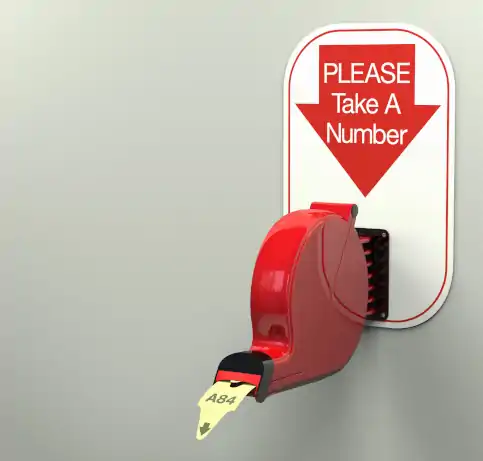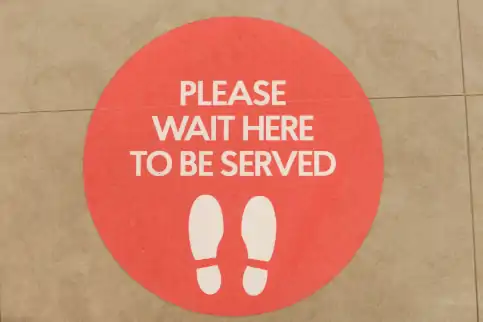Why a one size fits all type of queuing system doesn't always work for every eventuality
Placing overflow users in an online queue needs to manage several eventualities within the context of queuing theory. If we look at how queue management operates in a physical environment, we can consider that information and transfer the solutions into the digital realm. Given that today's online communities have such vast expectations of operation and fairness, all of the issues we were once likely to face have been eradicated using easy to administer queuing services like ours.
For them to work well, however, and to maintain brand confidence and loyalty while allowing customers easy access to the site, vendors still need to apply queuing theory and queue management systems in ways that elevate their user experience while customers wait, so the average time spent waiting doesn't drag. Feel free to read our many solutions pages that dig deeper into your customer journey and satisfaction in all types of markets.

What can we learn from physical queue management systems?
Let's look at the different kinds of queues we face in the physical world, just as we did the different levels of demand we face, at the head of the page. These are of the common type:
- Unstructured queue
One of the most frustrating systems is probably best portrayed by lining up at a bar. There is no organization, no system, and no visible structure. The best you can hope for is that the only one server has a mental list of who arrived and when, or if you can catch her eye before the twenty other people around you. If there are multiple servers, it becomes multiple unstructured queues. This isn't a fair method of crowd control, and you might be waiting a long time to receive service. For your queue structured queues are much better, according to queuing theory.
- Structured queue
An organized queue puts buyers in a first-come-first-served system, but if there aren't enough tills or payment points to cope with the arrival rate, the experience of queuing is frustrating, encouraging shoppers to leave the queue management system and acquire their items elsewhere. Service providers want to minimize possible customers leaving and our solution does a great job of that.
- Mobile or virtual queue
Each shopper is allocated a ticket or digital position in the queue and is notified by a monitor's display or the hearty shout of the one server when the shopper's turn has come. The crowd control problems start when a shopper fails to hear a call (in other words with long lines), becomes bored, and leaves or their place is lost or missed by human or technical error, reducing the service rate (average number of customers served per minute - see little's law.
What have these common types of queuing systems got to do with virtual queues? All are possible in digital queuing environments and the real world, yet have been cleverly dealt with online to provide a fair and efficient system with a good customer experience for the people queuing while they are waiting in line in the queue management system.
Unstructured digital queues
An unstructured digital queue would allow some visitors straight through to the checkout process while others waited indefinitely, in random order, regardless of the service time or waiting times or sizes of the waiting lines. Unless you are one of the lucky ones, this is a poor customer experience. A first-come-first-served system immediately wipes out the problems of this instance, minimizing wait times, especially with long queues, according to queuing theory.
Structured digital queues
But what happens when those at the front of the queue decide to get on with another task yet hold on to their place in a digital queue? This could create a block in the traffic, holding up the line, adding longer waits and frustration to those behind them, all while preventing sales for the vendor. The solution—with several slots available to feed into the transaction pages, along with continuous measurement of buyer behavior, the software allows a steady flow of ready-to-go buyers into the next stage, and automatically compensates for people who aren't online when their turn is called.
Virtual digital queues
This is at the heart of online queuing systems. Each user is allocated a place in the queue and is called to complete when they reach the front. The quality of the user experience demands continued communication, alerting them of their current position and the expected time until they reach the front. Online virtual queues like Queue-Fair also include automatic queue measurement systems, to ensure that the queue doesn't get stuck if someone is not present when their turn is called, or let too many people through if someone comes back after their turn is called - but the quality of these systems does vary widely. It is crucial that such systems are accurate, as poorer quality Virtual Waiting Rooms are less accurate - resulting in too few people being passed each minute and a slower queue, resulting in load fluctuations on your eCommerce site and also abandonment because people wait too long when the front of the queue doesn't move at the correct speed. You can't rely on a poisson distribution, service pattern or average service time - using an average number at the turbulent front of an online queue won't be sufficient. You need a proper AI to control the Front of the Queue for each separate queue to properly minimize average wait time. Queue-Fair's Queue AI is (by far) the most accurate on the market, sending you the exact arrival pattern you want in terms of people per minute every minute.
Options of email and text alerts when their turn arrives allows buyers to get on with other tasks, removing a great deal of the anxiety over wait times that comes with people queuing.
Additional methods of reducing anxiety and improving user experience include distraction techniques, such as in-queue entertainment or upselling other product lines. It's also an opportunity to educate your shoppers about your full range of services and any bonus offers or services they're entitled to claim.
Setting up your virtual queuing system
The three previously mentioned queuing systems, fortunately, are neatly contained in our virtual queuing software, the Queue-Fair standalone queue management system.
The first of which, the virtual queue, is its bread and butter. Delivering each of the benefits already outlined, it's highly customizable at every juncture, adding to your brand quality and customer confidence. It's unlikely your visitors will realize they've left your site and entered our waiting rooms.
When you choose Queue-Fair to manage your customer queuing experience, it covers everything you need and more to deliver a great customer experience.
You retain complete control throughout the process. You have options to monitor performance in real-time and communicate directly with your waiting customers, delivering additional peace of mind and fresh information about your products or providing service as part of the arrival process.
You can use it to protect an entire website or a single page. You can feel safe knowing we only use Tier 3 hosting providers, served by Google CDN, and protected by Google Cloud Load Balancer. You can queue up to 9 million people simultaneously on each one of our queue servers. We've even solved the problem of people dropping out of the queue too.
Protect yourself, your visitors, and your sales by being ready for every eventuality
You might not think you're prone to a traffic surge and an overload to your website or service mechanism. Or you might be considering, as your business grows and normal life looks likely to resume in the near future, that it's time to protect against the possibility of traffic surges when the floodgates open, without having to spend more on a higher number of servers.
Either way, now is the ideal time to start protecting your systems. A little investigation and monitoring could save you thousands—even millions—a little further down the line.






























